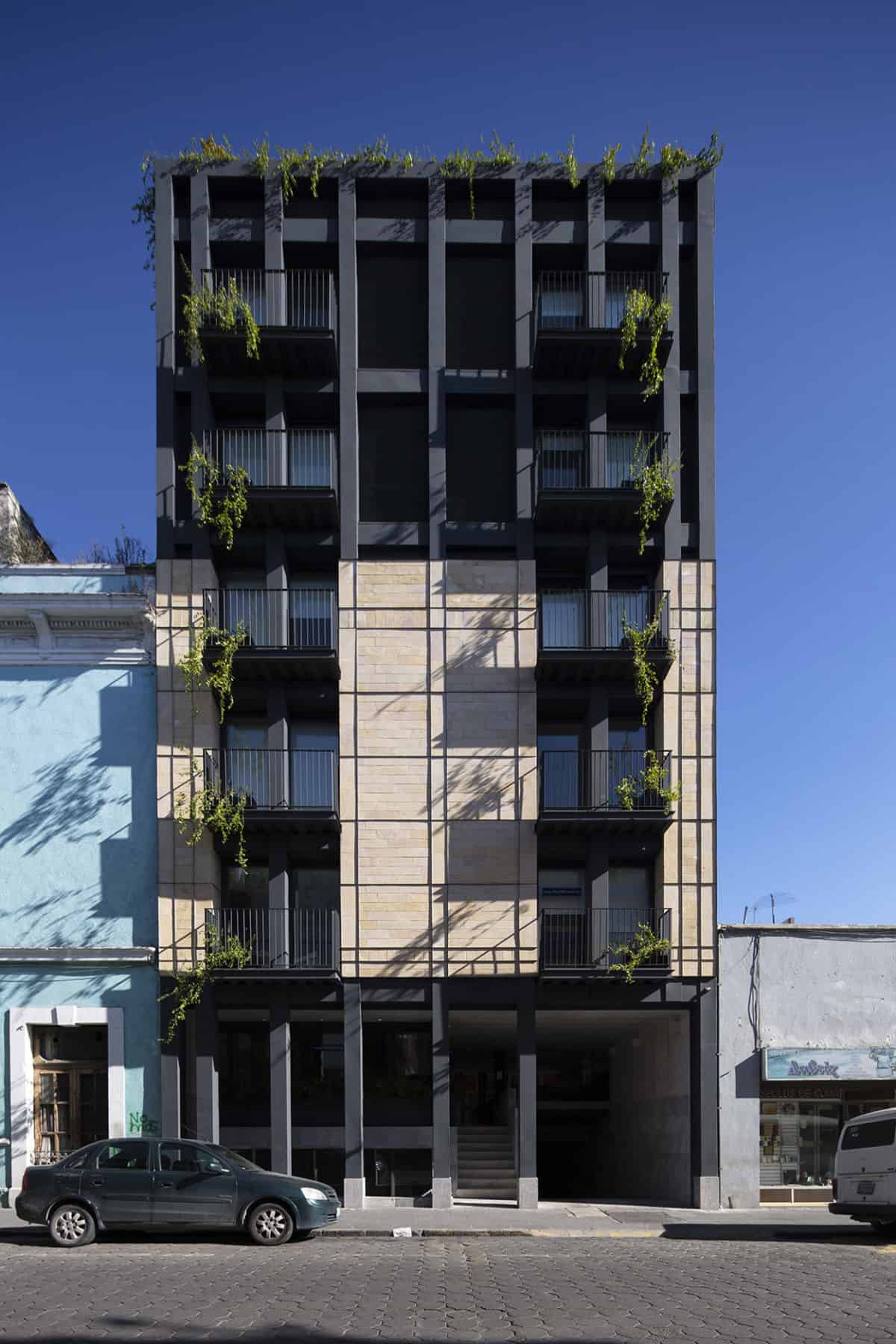The city of Puebla (founded in 1531) is one of the fastest growing cities in the las years, its close proximity to Mexico City, strong industrial activity aside its cultural and historic heritage make it one of the most attractive of the country. Its historical center is one of the many important in Latin America and was appointed World Heritage Site by UNESCO on December 11th 1987. It has 2,619 historic monuments, civil and religious architectural jewels, that make unique this colonial city: one of the most visited in the world.
From the exterior the building preserves its preexistence proportions and starts new integration codes from its facades. In both laterals, the building shares urban murals that display an abstraction of colors and elements of its immediate context such as the repetition of the balconies and windows used on the main façade.
On this last one continues a symmetric structuring throughout all its levels including three sectors: the portal entrance, the stone foundation that gives continuity to the following building and the last sector colored in black crowned with a terrace forming the roof garden. The vegetation running along the whole façade breaks the building´s impenetrability.
In the interior the first encounter is with the main lobby and the vertical circulation (lift and stairs) leading towards the apartment levels, each formed by a full bathroom, living & dining room, kitchenette and balcony. On the top level the amenities are located formed by gym, lounge, barbeque, terraces and services. This sector is without a doubt one of the most privileged with views to the volcanoes on the west accompanied by the domes of several religious buildings and to the east the city flanked by mountains.
The building has soon started to generate a positive activation. In front of it, another building has started to improve and rehabilitate its facade new brand stores are arriving, the local little shops are rising their sales and the social activity is constant through day and night. Reactivating the community life is the main purpose of this architectural rehabilitation.
- Architect: Gerardo Boué – Boué Arquitectos
- Photographer: Marcos Betanzos











